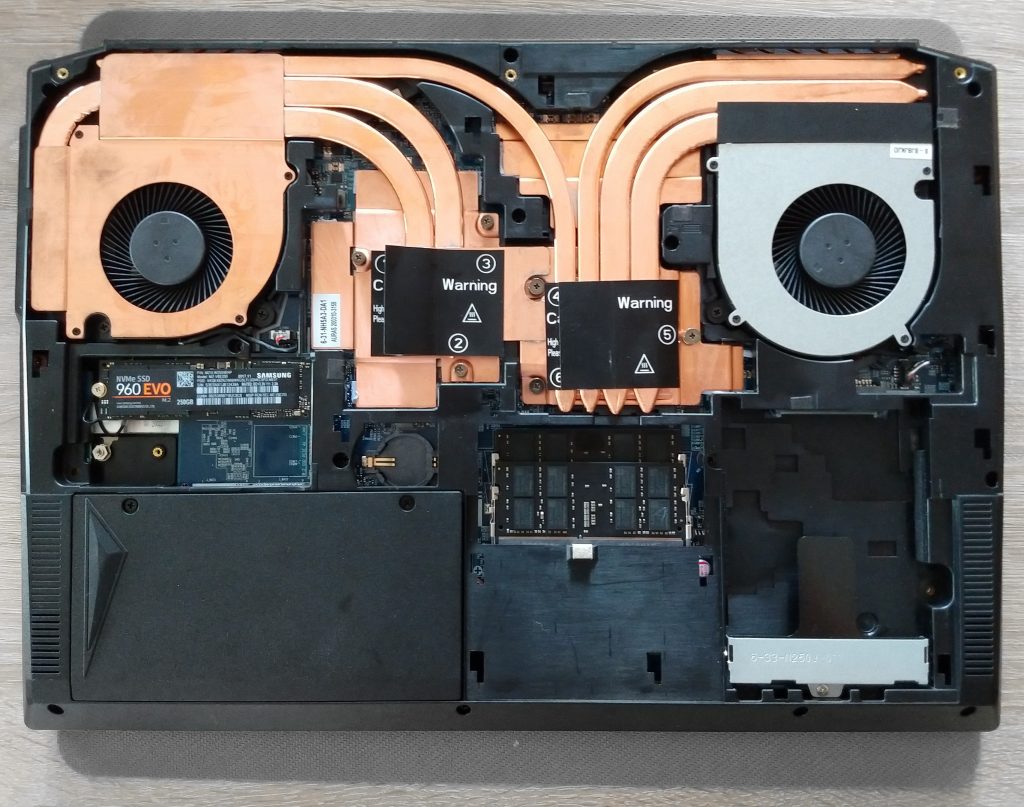I am as coreZair in various forums and as 3DAndStuff on my YouTube channel. But today I am writing this article for you as a guest author. In addition to my YouTube videos, I would like to share the results of some of my research with you. The XMG Apex 15, a notebook that is equipped with an AM4 desktop socket and supports current Zen2 desktop processors in the 65W TDP configuration, is to be the focus here. There is still no official confirmation if the notebook with its B450 chipset will also get a BIOS update for Zen3, but technically there is no reason why not. So, wait and hope!
It is also the only AMD Zen2 notebook with support for an Nvidia GeForce RTX 2070. All other devices with a mobile AMD CPU based on Zen2 are offered at best with a maximum RTX 2060. So we can typically expect a 15% performance increase on the GPU alone, without considering the potential performance increase of the CPU and overclockable DRAM. So you can rightly say that the XMG Apex 15 is currently the fastest AMD-based gaming notebook and the fastest workstation notebook in the world, if you leave Quadro-only applications out of the equation.
In this article we will discuss the differences between the desktop CPUs in this notebook. Each test will provide an insight into the categories of performance, temperature, noise and overclocking potential of the processors. If you find all this too much to read, you can also watch the corresponding YouTube YouTube video.

The crucial question with barebone: Which CPU may or must it be?
If you consider to buy a XMG Apex 15, you propably come to the point at which you struggle to decide which CPU is the one to choose. Let me try to help you out. I want to give you some more detailed information, what you can expect from each CPU in regards to performance, temperature, noise and their overclocking & undervolting potential. I have to thank XMG that they made this possible. They lend me 5 CPUs for my tests.
- Ryzen 5 3600 (6C/12T) (production code 1928 – July 2019)
- Ryzen 7 3800X (8C/16T) (production code 2022 – June 2020)
- Ryzen 9 3900 (12C/24T) (production code 1948 – November 2019)
- Ryzen 9 3900X (12C/24T) (production code 2019 – May 2020)
- Ryzen 9 3950X (16C/32T) (production code 2008 – February 2020)
And of course my own processor was available for those tests, too.
- Ryzen 7 3700X (8C/16T) (production code 2011 – March 2020)

Why the 3800X and the 3900X you may ask? They are no option for configuration, I know. But I wanted to know if there is any benefit over their 65W counterparts (3700X vs 3800X and 3900 vs 3900X). Unfortunately there were no XT processors available for the tests, sorry! I was curious if they could make a difference. But more on those possible “higher quality silicon” differences later. Also keep in mind that I only got one CPU each, which does not cover the variety of silicon quality. For a proper test I would need at least 10 samples each. So take the following results as an estimate, not as guaranteed.
Test conditions
The general hardware used for ALL tests was quite standard to represent the average hardware configuration most of the Apex 15 owners would run.
- GPU: Nvidia RTX 2070 Mobile Refresh (8GB VRAM)
- Memory: 2x8GB 3200MHz 22-22-22 (Timings identical to Crucial 3200 CL22 modules)
- Mass storage: WD SN750 NVMe SSD (M.2 PCIe 3.0 slot)
TDP, PPT, Package Power – What does that mean?
So basically we talk about 65W and 105W TDP processors in case of Zen 2 (Ryzen 3000 series). TDP means “thermal design power” and does not automatically correspond to your processor’s real power draw. In reality a 65W TDP Zen 2 processor can use up to 88W PPT or 90W Package Power. Imagine TDP as a classification for “what your cooling system should at least be able to handle”, only.
- 1 - Introduction, Processors and Setup
- 2 - Thermal Compound or Thermal Pad? Noise and Temperatures
- 3 - Idle and Browser Streaming
- 4 - Cinebench R20
- 5 - PugetBench for Adobe Premiere Pro 2020 (version 1.4.3.2)
- 6 - Shadow of the Tomb Raider
- 7 - CS:GO
- 8 - Manual Overlocking
- 9 - Conlusion and Final Words


































Kommentieren